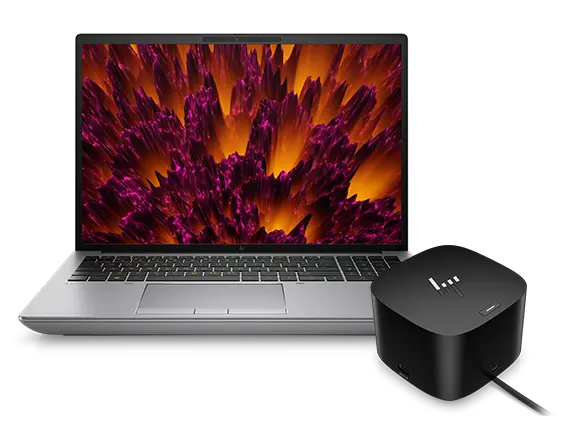The NVIDIA Quadro P2000 is a high-performance graphics card designed to handle demanding tasks like professional rendering and gaming. Understanding how to activate and manage this GPU can significantly enhance your laptop’s performance. This guide will delve into the specifics of whether the Quadro P2000 activates automatically or if manual setup is necessary, along with detailed steps on how to ensure it is properly utilized.
Automatic Activation of the NVIDIA Quadro P2000
In many laptops equipped with NVIDIA Quadro P2000, the GPU works alongside NVIDIA’s Optimus technology. This technology allows the system to switch between the integrated graphics processor and the dedicated Quadro GPU based on the task being performed. Here’s a closer look at how this automatic activation works:
- Lightweight Tasks: For everyday activities such as browsing the internet, working on office documents, or streaming videos, the integrated graphics (typically Intel or AMD) are used. This helps in conserving battery life and reducing power consumption.
- Heavy-Duty Tasks: When you launch a resource-intensive application like CAD software, 3D rendering programs, or modern video games, Optimus technology detects the need for more power and automatically switches to the NVIDIA Quadro P2000 to provide enhanced performance and graphics capabilities.
However, despite this seamless switching, there are scenarios where the system might not automatically select the Quadro P2000 when you need it most. This can result in suboptimal performance, and hence, understanding how to manually activate the GPU becomes crucial.
Manually Activating the NVIDIA Quadro P2000
If your laptop isn’t utilizing the Quadro P2000 for high-performance tasks, you can manually configure it to ensure the best performance. Here’s how you can do it using different methods:
Using the NVIDIA Control Panel
- Open NVIDIA Control Panel: Right-click on the desktop and select “NVIDIA Control Panel” from the context menu.
- Manage 3D Settings: In the NVIDIA Control Panel, go to the “Manage 3D settings” section.
- Global Settings:
- Under the “Global Settings” tab, set the preferred graphics processor to “High-performance NVIDIA processor.”
- This setting ensures that the Quadro P2000 is used for all applications by default.
- Program Settings:
- To specify the Quadro P2000 for individual applications, navigate to the “Program Settings” tab.
- Select the desired program from the dropdown menu, or add it manually if it’s not listed.
- Set the preferred graphics processor to “High-performance NVIDIA processor” for the selected application.
- Apply Changes: Click “Apply” to save your settings and ensure the changes take effect.
Using Windows Settings
- Open Windows Settings: Press
Win + Ito open the Windows Settings menu. - System Settings: Navigate to “System” > “Display” > “Graphics settings.”
- Add Application:
- Click “Browse” to find and select the application you want to configure.
- Once selected, click “Add.”
- Graphics Options: Click on the added application and select “Options.”
- High Performance: Choose “High performance” as the preferred setting and click “Save.”
This ensures that the selected application will use the Quadro P2000, providing optimal performance for rendering or gaming tasks.
Optimizing Performance of the NVIDIA Quadro P2000
To get the most out of your NVIDIA Quadro P2000, consider the following tips:
- Keep Drivers Updated: Regularly update your NVIDIA drivers to the latest version. You can do this through the NVIDIA website or by using the GeForce Experience application, which automatically checks for and installs driver updates.
- Monitor GPU Usage: Utilize tools such as NVIDIA’s Task Manager integration or third-party applications like MSI Afterburner. These tools help monitor GPU usage to ensure the Quadro P2000 is being fully utilized.
- Adjust Power Settings: Set your laptop’s power plan to “High performance” in the Windows power settings. This prevents the system from throttling the GPU to save power and ensures maximum performance.
- Thermal Management: Ensure your laptop’s cooling system is functioning correctly. Overheating can cause the GPU to throttle, reducing performance. Use a cooling pad or clean the laptop’s vents regularly to maintain optimal temperatures.
- Application-Specific Profiles: Some applications allow you to set GPU preferences within their settings. Check the application’s documentation or settings menu for options to specify the Quadro P2000.
Troubleshooting Common Issues
Despite configuring your settings, you might encounter issues where the NVIDIA Quadro P2000 isn’t performing as expected. Here are some common issues and troubleshooting tips:
- Performance Drops: If you notice performance drops, check if the laptop is overheating. Overheating can cause the GPU to throttle its performance. Ensure proper ventilation and consider using a cooling pad.
- Driver Conflicts: Sometimes, outdated or corrupted drivers can cause issues. Uninstall the current driver using Device Manager, then reinstall the latest driver from the NVIDIA website.
- Application-Specific Problems: If a specific application isn’t utilizing the Quadro P2000, check the application’s settings for any GPU preferences. Some applications may need to be explicitly set to use the high-performance GPU.
- System BIOS/UEFI Settings: In some cases, adjusting settings in the BIOS/UEFI can resolve GPU-related issues. Ensure that any GPU settings are configured correctly and that the dedicated GPU is enabled.
Conclusion
The NVIDIA Quadro P2000 is a robust GPU designed to handle intensive rendering and gaming tasks. While NVIDIA Optimus technology facilitates automatic switching between integrated and dedicated graphics, manually configuring your settings can ensure optimal performance. By following the steps outlined in this guide and employing best practices for performance optimization, you can fully leverage the power of the Quadro P2000 for all your demanding tasks.
Windows 11 Gets a Boost for Android Apps with WSA 2407.40000.0.0 LTS 4 Update


